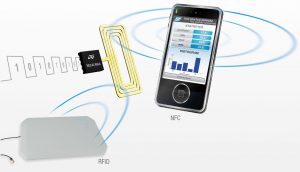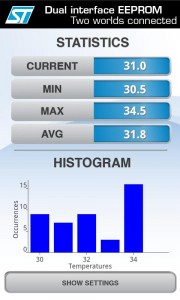No more waiting for annoying cell phone salesmen to configure your new gear while they try to sell you accessories

While the short-range wireless technology known generically as Near-field communications (NFC) is still in its early stages of consumer adoption, the technology is already in its seventh year of development and it is maturing beyond the point where it can be used simply for exchanging small bits of information or payment authorization. Imagine if companies could make a single production run of smartphones, tablets, or notebooks without having to regionalize the software on it, and that was done the moment the machine was purchased.
Switzerland-based semiconductor company STMicroelectronics on Tuesday launched a new dual-interface EEPROM memory unit (M24LR64) that is specifically designed to make a system's data available via NFC at all times. EEPROM is a non-volatile form of memory commonly used in microcontrollers in industrial machinery, and can often be found in digital sensors and timers.
But the company today pointed out that RFID and NFC are becoming especially common in supply chain management, because it reduces the amount of time spent counting individual items in a shipment. If each item contains an RFID chip, a pallet of items could be scanned and counted instantaneously. With this new type of EEPROM memory, ST says these products could not only be counted, but be activated upon delivery, and updated with regional settings and firmware when they're sold.
Because NFC can be paired through sealed packaging, an NFC-capable terminal could, scan your new product when you purchase it at Best Buy, for example, and tell the system clock EEPROM that you're on Eastern Standard Time so when you flip open your new Notebook for the first time, you wouldn't have to choose your region and language or connect to the cloud to run an initial setup.

To show off how data can be manipulated via NFC, ST has constructed a prototype temperature sensor and datalogger with this new chip which pairs with an Android app called Dual EE. This is meant to show how the smartphone can perform both read and write functions on the chip, including starting and stopping temperature collection and changing settings, downloading logged data, displaying metrics and creating graphs, and so forth.
